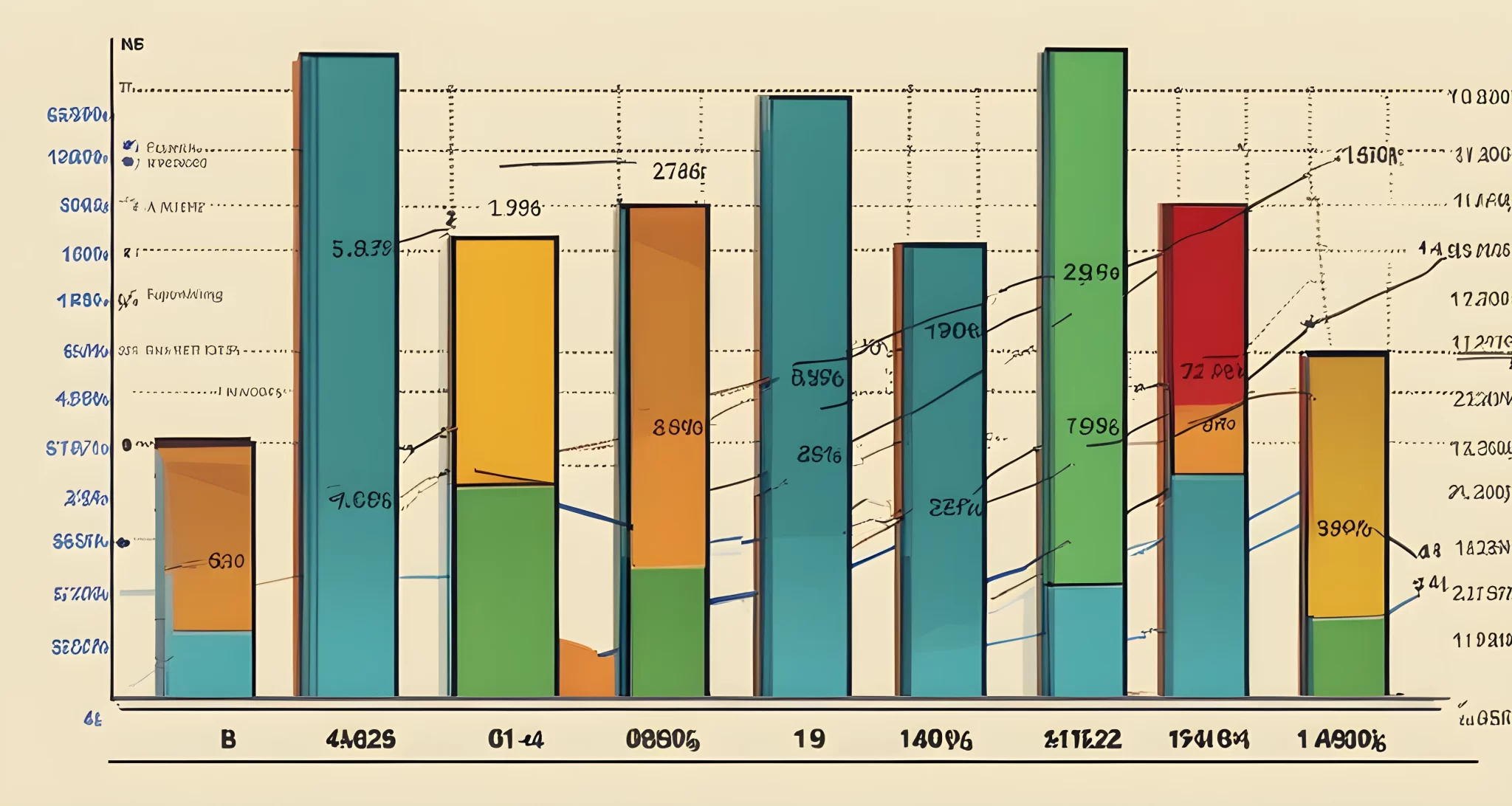Understanding Investment Risks
When it comes to building a successful investment portfolio, understanding the various types of investment risks is crucial. By familiarizing yourself with these risks, you can make well-informed investment decisions and take necessary precautions to mitigate potential losses.
Types of Investment Risks
- Market risk: The risk of losses due to factors such as economic downturns, geopolitical events, or market volatility.
- Interest-rate risk: The risk that changes in interest rates will impact the value of your investments.
- Inflation risk: The risk that inflation will erode the purchasing power of your investments over time.
- Credit risk: The risk of losses due to a borrower’s inability to repay a loan or debt obligation.
- Liquidity risk: The risk that you may not be able to sell an investment quickly without incurring a significant loss.
- Operational risk: The risk of losses due to human error, system failures, or other operational issues.
- Model risk: The risk that the models used to forecast investment performance may not accurately predict future outcomes.
Making Informed Decisions
By understanding these risks, investors can make informed decisions about their portfolios. For example, an investor concerned about market risk may choose to diversify their portfolio across different asset classes and geographic regions to minimize the impact of market downturns. Additionally, an investor worried about liquidity risk may opt for investments that are easier to buy and sell quickly.
Seeking Professional Advice
For those who are new to investing or want additional guidance on managing risks, seeking professional advice is key. Financial advisors can help investors assess their risk tolerance and develop a diversified portfolio that aligns with their investment goals.
Understanding investment risks is an essential component of successful portfolio management. By taking the time to educate yourself about these risks and how they can affect your investments, you can build a resilient portfolio that is better equipped to weather market fluctuations and generate long-term returns.
To learn more about maximizing your investment returns, Increase Investment Gains.

Assessing Your Risk Tolerance
Determining your risk tolerance is a crucial step in effectively managing your investment portfolio. This process involves evaluating how much risk you are willing to accept based on your investment goals and time horizon. By understanding your risk tolerance, you can make investment decisions that align with your comfort level and overall financial objectives.
When assessing your risk tolerance, it’s essential to consider a few key factors. Firstly, you should evaluate your investment goals. Are you saving for retirement, a major purchase, or simply looking to grow your wealth? Understanding your financial objectives will help you determine the level of risk you are willing to take on.
Secondly, consider your time horizon. If you have many years until retirement, you may be more comfortable taking on higher levels of risk for the potential of greater returns. Conversely, if you are nearing retirement or have a shorter time horizon, you may prefer a more conservative approach to avoid significant market fluctuations.
It’s also important to think about your emotional and psychological tolerance for risk. Some investors are comfortable with market volatility and potential losses, while others may become anxious or stressed in similar situations. Understanding how you react to risk can help guide your investment decisions.
To assist in the assessment of your risk tolerance, there are various online tools and questionnaires available that can provide insights into your comfort level with different investment scenarios. These resources can be valuable in helping you understand how much risk you are truly willing to accept within your portfolio.
Finally, considering professional advice from a financial advisor can also be beneficial when determining your risk tolerance. A professional can provide personalized guidance based on your individual financial situation and investment goals.
Assessing your risk tolerance is a critical aspect of building and managing an investment portfolio. By understanding how much risk you are comfortable with, you can make informed decisions that align with your long-term financial objectives and ultimately lead to portfolio success.
For more effective strategies for managing portfolio risks, check out Efficient Portfolio Risk Strategies.

Diversifying Your Portfolio
One effective way to manage risk is by diversifying your portfolio. This means spreading your investments across various asset classes and sectors to reduce concentration risk. By diversifying, you can minimize the impact of any single investment’s performance on your overall portfolio, thus mitigating potential losses.
Diversification involves investing in a mix of assets such as stocks, bonds, real estate, and commodities. This approach helps spread risk because different asset classes tend to perform differently under various market conditions. For example, when stocks are performing poorly, bonds or real estate investments may be performing well, and vice versa.
Additionally, within each asset class, it’s important to diversify further by investing in different sectors. For example, within the stock market, you can invest in technology, healthcare, consumer goods, and energy sectors to reduce sector-specific risks.
Diversification also extends to geographical regions. Investing in international markets can help spread risk further by reducing the impact of domestic economic or geopolitical events on your portfolio.
It’s important to note that while diversification can help mitigate risk, it does not guarantee against losses. However, by spreading your investments across various assets and sectors, you can potentially reduce the overall volatility of your portfolio.
If you are unsure about how to diversify your portfolio effectively, considering professional advice from a financial advisor or investment manager is crucial. They can provide personalized recommendations based on your financial goals and risk tolerance. In fact, seeking professional advice is one of the key steps in addressing risk in your investment portfolio.
In conclusion, diversifying your portfolio is an essential risk management strategy that can help protect your investments from unexpected market movements. By spreading your investments across different asset classes and sectors, you can potentially minimize the impact of market fluctuations on your overall portfolio Optimizing investment performance.

Monitoring and Controlling Portfolio Risks
Regularly reviewing your portfolio’s risks and adjusting your strategy accordingly is important in risk management. By continuously monitoring and controlling portfolio risks, you can make proactive changes to your investment approach and minimize the impact of unforeseen events.
When it comes to monitoring and controlling portfolio risks, there are a few key steps to keep in mind. First, it’s important to regularly assess the overall risk level of your portfolio. This involves looking at the individual investments within your portfolio, as well as considering external factors such as market conditions and economic trends. By staying informed about the potential risks facing your investments, you can make more informed decisions about how to adjust your strategy.
In addition to assessing the current risk level of your portfolio, it’s also crucial to consider how your risk tolerance may change over time. As you move closer to retirement or experience changes in your financial situation, your tolerance for risk may shift. Regularly reassessing your risk tolerance can help you make sure that your investment strategy aligns with your current financial goals and circumstances.
One effective way to control portfolio risks is through diversification. Diversifying your portfolio Addressing Risks Investment across different asset classes, industries, and geographic regions can help spread out risk and reduce the impact of any one investment underperforming. Regularly reviewing the diversification of your portfolio can help you identify areas where adjustments may be needed.
Finally, considering professional advice from a financial advisor can be a valuable way to monitor and control portfolio risks. A professional advisor can provide personalized insights into the specific risks facing your investments and offer guidance on how to adjust your strategy accordingly.
By staying proactive in monitoring and controlling portfolio risks, you can work towards minimizing the impact of unforeseen events and stay on track towards achieving your financial goals.

Considering Professional Advice
When it comes to managing investment risks, working with a financial professional can provide valuable assistance. A financial advisor can help you select suitable investments that align with your risk tolerance and overall objectives. They can also provide guidance on effective risk management strategies, ensuring that your investment decisions are well-informed and compliant with regulatory requirements.
By seeking professional advice, you can benefit from the expertise of someone who understands the intricate nature of investment risks and how to navigate them effectively. A financial advisor can offer personalized recommendations based on your individual circumstances, helping you make informed decisions that are tailored to your specific needs.
It’s important to recognize that managing investment risks is not a one-size-fits-all approach. Each investor has unique goals, risk tolerances, and financial situations. By consulting with a financial professional, you can receive personalized advice that takes into account your specific circumstances and objectives.
Furthermore, a financial advisor can assist in creating a well-diversified portfolio that spreads risk across different asset classes and investment vehicles. This approach can help mitigate the impact of market fluctuations on your overall investment performance.
In addition, working with a financial professional can provide peace of mind, knowing that you have an expert guiding you through the complexities of investment risk management Investment Risk Planning. They can also offer ongoing support and monitoring of your portfolio, making adjustments as needed to ensure that your investments continue to align with your risk tolerance and long-term objectives.
In conclusion, considering professional advice when addressing investment risks is a prudent decision. A financial advisor can offer valuable insights, personalized recommendations, and ongoing support to help you effectively manage risk within your investment portfolio.
FAQ
What are the different types of investment risks?
The different types of investment risks include market risk, interest-rate risk, inflation risk, credit risk, liquidity risk, operational risk, and model risk.
How can i manage risk effectively in my investment portfolio?
You can manage risk effectively by understanding the various risks involved, assessing your risk tolerance, diversifying your portfolio, monitoring and controlling portfolio risks, and considering professional advice.
Why is it important to address risk in my investment portfolio?
Addressing risk in your investment portfolio is crucial for achieving your financial goals while minimizing potential losses. it involves identifying, analyzing, and accepting or mitigating uncertainty in investment decisions.
How can i optimize my returns while managing risk in my investment portfolio?
By understanding and addressing the risks in your investment portfolio, you can make well-informed decisions and optimize your returns while staying compliant with regulatory requirements.
